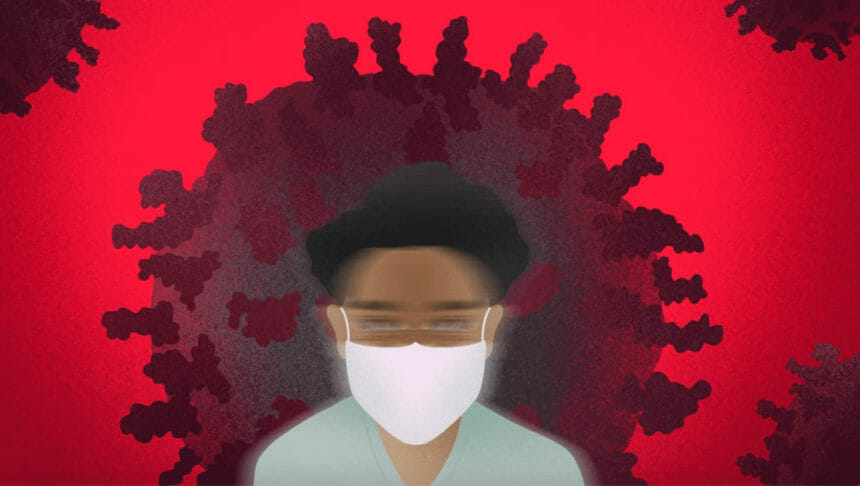
The first available vaccines against SARS-CoV-2 should go to frontline healthcare workers — including those who work in assisted living communities — and first responders, according to draft recommendations from the National Academies of Sciences, Engineering, and Medicine.
But application of the recommendations to older adults in long-term care settings — specifically, senior housing — is unclear, according to industry representatives.
The National Academies’ ad hoc Committee on Equitable Allocation of Vaccine for the Novel Coronavirus on Tuesday released a “Discussion Draft of the Preliminary Framework for Equitable Allocation of COVID-19 Vaccine” outlining a preliminary, four-phased approach for the equitable allocation of COVID-19 vaccine.
The draft mentions assisted living in the context of including frontline healthcare workers in the first phase of vaccination to reduce their risk of spreading the infection, as well as protecting workers at high risk for severe illness and death due to comorbid conditions and age.
Otherwise, the draft proposes that older adults living in congregate care and long-term care settings — citing nursing homes or skilled nursing facilities as examples — be in Phase 1b of vaccine allocation.
At a public listening session on the draft recommendations on Wednesday, David Schless, president of the American Seniors Housing Association, told the committee he was pleased to see healthcare workers and high-risk seniors included in the first phase of vaccine allocation, but he recommended more specificity, noting similarities between senior living communities and skilled nursing facilities.
“While there are differences in the two settings, the senior living industry is very much serving on the front lines during this COVID-19 crisis, along with the rest of the healthcare system, including nursing homes,” he said. “And so, unless senior living settings (both residents and employees) are expressly defined and included in the recommendations for prioritized vaccine allocation, they will be at risk of being inadvertently excluded.”
Schless shared statistics about the senior living resident population, including high rates of chronic illness, and cognitive and functional impairment, as well as increased risks associated with quarantining and isolation during a pandemic. He also noted that members of the senior living workforce are in danger of either contracting the disease or carrying the virus asymptomatically into a community.
“An operators’ ability to prevent and mitigate transmission of COVID-19 in their communities is affected by the rate of infection in the surrounding geograpies, as well as access to personal protective equipment and testing for current infection,” Schless said. “These are circumstances largely out of our control despite our best efforts, thus supporting the call for prioritization in vaccine distribution.”
Schless said that without clarification, the industry will be “overlooked much like it has been for the dissemination of testing and supplies of [personal protective equipment].”
Mark Parkinson, president and CEO of the American Health Care Association / National Center for Assisted Living, reiterated for the committee the organizations’ call for residents and staff members in long-term care to be prioritized to receive a COVID-19 vaccine when it becomes available.
“Long-term care was forgotten at the start of the pandemic, but we cannot be forgotten now,” he said. “Ensuring long-term care residents and staff are among the first to receive a vaccine when it becomes available will help mitigate the risk and prevent further deaths.”
Although providers have taken “unprecedented action” to protect older adults, Parkinson said, research shows that a high rate of community spread “is all but certain to lead to outbreaks in nursing homes and assisted living communities.”
“As long as the virus is a threat to the general public, it is a threat to our residents and staff,” he said. “If we can vaccinate long-term care residents and caregivers first, they will be less at risk in the event we see a rise in cases within our communities.”
Chad Worz, PharmD, chief executive of the American Society of Consultant Pharmacists, and Brendan Flinn, director of Medicaid and home- and community-based services for LeadingAge, also were among those commenting at the public listening session.
Flinn said that LeadingAge’s priorities related to the report include supporting the first phase prioritization of healthcare workers and older adults in congregate settings; requesting that older adults in congregate settings be moved up from phase 1b to 1a; confirming that “congregate settings” in phase 1b includes affordable/HUD-assisted housing communities; and requesting that workers in community-based settings be included in the phase 1a category for workers.
Argentum called the discussion draft “a significant step in ensuring vaccine priority,” adding that the organization “will be working closely with decision-makers to offer guidance on what an administration of vaccines needs to look like among senior living communities.”
Additional public comments on the draft are being accepted until this Friday, Sept. 4, at 11:59 p.m. EDT via this form.
Updated Sept. 3 to add Argentum comment.


